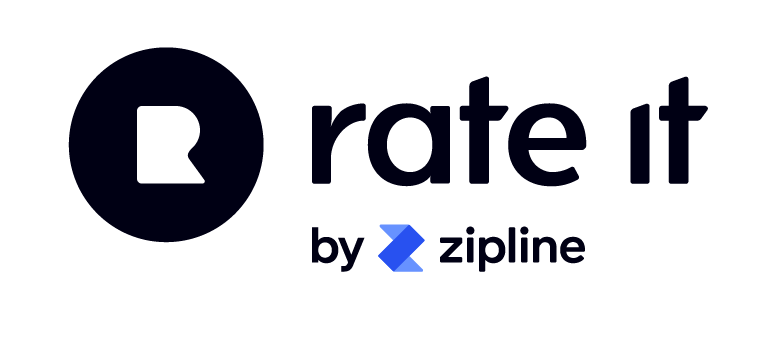The Customer Experience Flywheel – Key Takeaways from 40 of the World’s Top CX Leaders
Over the last twelve months, we interviewed 40 of the world’s leading customer experience thinkers and doers for our Customer Experience Leaders podcast.
During these illuminating conversations, we noticed several universal themes and best practices emerge that show how world-class brands manage their customer experience.
As we were curious to learn what these commonalities were, we rolled up our sleeves and analysed each single episode to draw out a total of 150 key takeaways. We then took these individual nuggets of wisdom and grouped them into 24 related themes.
The Customer Experience Flywheel
The result of all of this analysis and information synthesis is the ‘CX Flywheel’ – a roadmap that will help your brand deliver an unforgettable customer experience every single time.
The Flywheel has the following four components that, together, ensure the consistent delivery of a flawless CX:
- The customer
- Leadership
- People
- Processes.
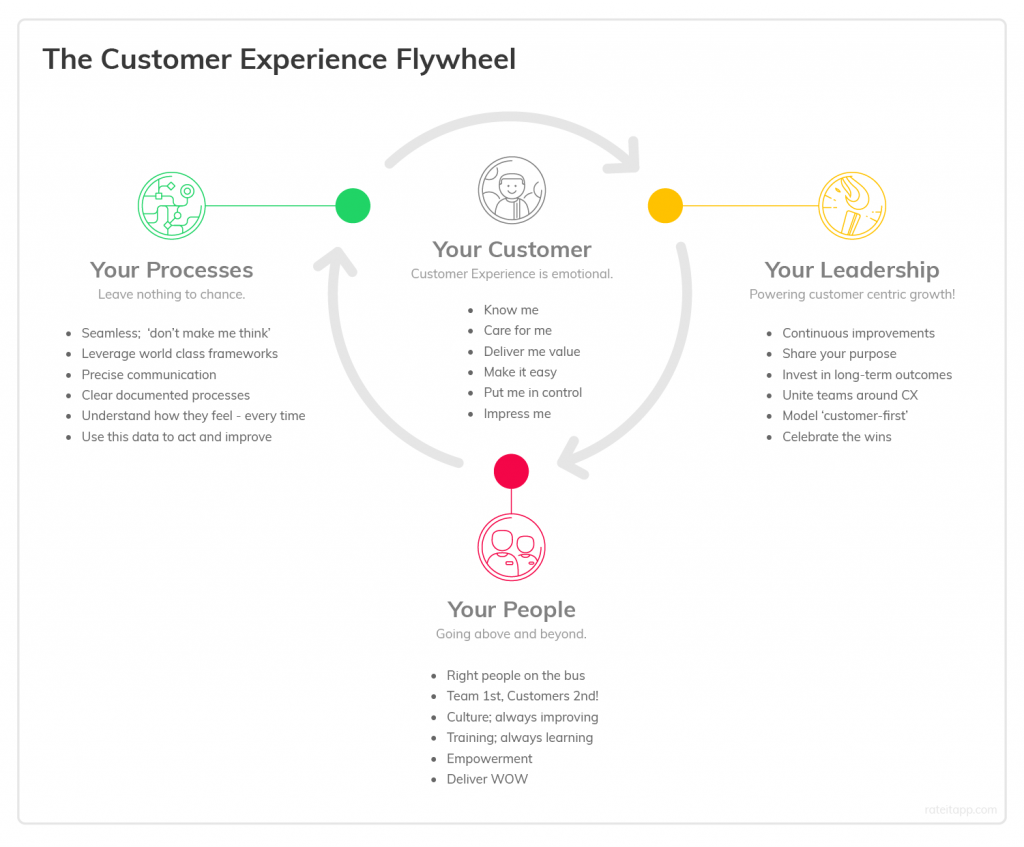
Your Roadmap for the Experience Economy
Why did we choose a flywheel to act as the model for our customer experience framework?
That’s because we believe a flywheel metaphorically encapsulates the following features that are endemic to an effective CX strategy: ongoing momentum, constant optimization and continuous improvement.
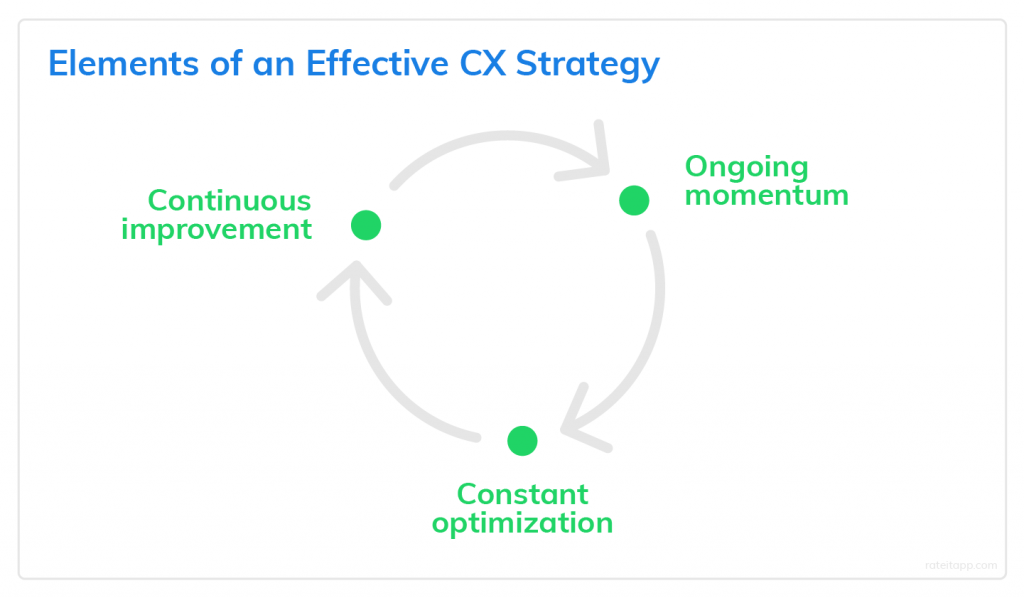
As brands move further away from a transactional focus and a simplistic view of the customer lifecycle, companies need a different set of strategies to help them wow customers. You’re no longer charging someone for the product or service that you deliver, but rather for the feeling, the experience.
In fact, in the current economy, customer experience IS the new brand. The CX Flywheel will help you better adapt to the ‘new normal’ of doing business where the focus is on increasing the value of relationships, rather than transactions.
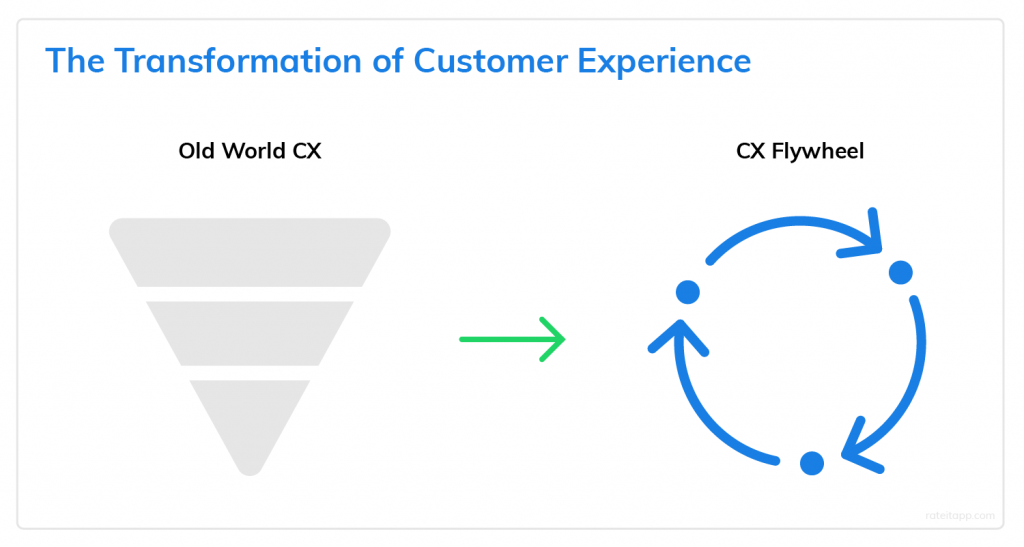
The Customer
Unsurprisingly, the customer sits at the heart of our Flywheel model, acting as the central spoke and lens through which we view the other elements.
While measurement plays a key role in tracking the customer experience, at the end of the day, it’s all about human emotions. All of the CX leaders we interviewed agree that the customer’s experience is driven by their feelings.
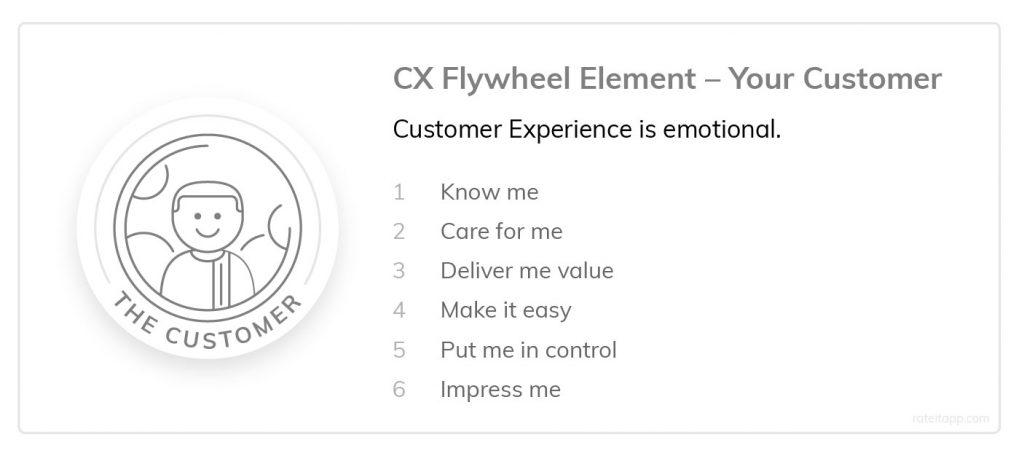
During our analysis, we uncovered 6 key themes that will help you deliver on what the customer really wants:
1. Know me
Don’t make the customer repeat themselves. This was highlighted in our interview with Customer Experience Futurist, Blake Morgan, who said: “Omni-channel, it might be a buzzword, but we don’t do it and we definitely don’t do it well … I’ve never worked with a brand as a customer that knows me no matter where I go. I do have to repeat myself at almost every turn. And that’s not an ideal experience because that’s making me work as a customer.”
2. Care for me
Invest in the relationship rather than the transaction. And look out for what the customer wants as the end goal.
3. Deliver me value
Ensure every moment delivers value. If you’re a B2B business, then you need to learn more about the ‘pyramid of value’ that Eric Almquist from Bain and Company discusses at length in the podcast episode.
4. Be easy to work with
Make the entire process really seamless and remove friction from every single interaction.
5. Put me in control
Have a customer-centric view of your processes. Put the customer in control of their journey.
6. Impress me
Deliver WOW moments which exceed the customer’s expectations!
Leadership
Just like any other undertaking, strong leadership is imperative to ensure an initiative is woven into an organisation’s operational and cultural fabric.
For customer experience leaders, it is even more important to be the strong guiding hand that champions the customer’s point-of-view internally. CX leaders must be the driving force, helping a business to realign its growth orientation towards measuring lifetime value and away from the usual quarterly and annual revenue focus.
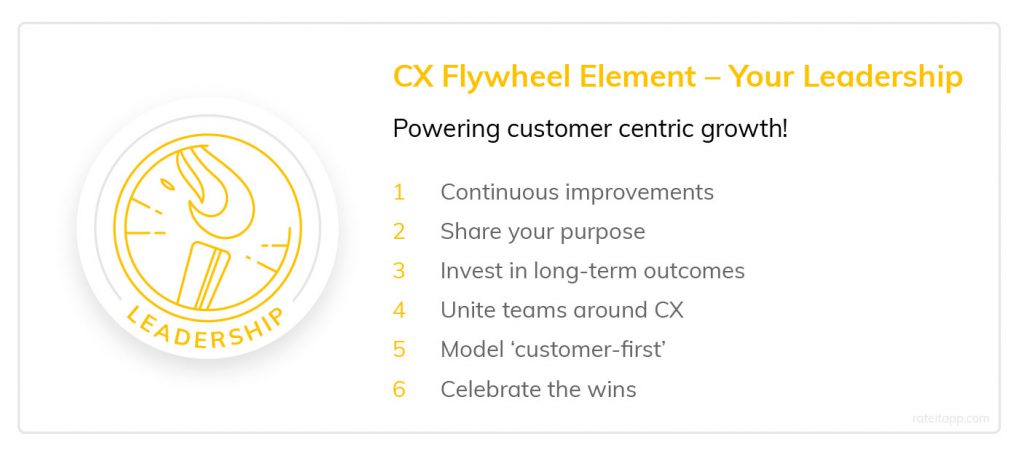
The podcast guests we interviewed agree that the following has to be instituted at c-suite level in order to embed the voice of customer into the organisation:
1. Know your ‘why’ / brand purpose
People should feel like they are part of something bigger by working with you.
2. Invest in long-term customer outcomes
Leadership needs to invest in customer outcomes. Don’t just focus on transactional short-term wins but look at building long-term relationships that deliver customer lifetime value (CLV).
3. Unite the organisation around CX delivery
CX is not a department. It’s important to unite the business around the prioritisation of customer experience. That means communicating it frequently internally, and ensuring that different teams and silos are motivated to work together. Customer experience is everyone’s responsibility.
4. Model a ‘customer-first’ behaviour
Leadership needs to model a customer-first behaviour. It’s really important to live and breathe this philosophy. A great example from one of our past podcast guests, SumoSalad – a leading Australian hospitality brand – is their side-by-side program where leadership spends time in-store with their team learning from customers.
5. Take actions towards quick-wins and celebrate them
Always go for the quick-wins and celebrate them as a team. This point was inspired by our interview with customer experience designer, Robert Sørensen, who said: “You really need those quick wins because they are the ones which are going to get other people to trust in your CX strategy, in your roadmap, in your plan. So it’s really about building some momentum behind it internally so that people support the CX vision.
6. Build a culture of continuous improvement
Having a culture of continuous improvement is so important when it comes to CX. Jason Bradshaw from Volkswagen Group Australia summed it up nicely: “We try to improve 1% every day”. It’s important to use metrics and feedback to always be improving.
People
While leadership helps to form and maintain a CX culture, it’s ultimately each individual touchpoint with your brand that shapes the end customer experience.
And the majority of these touch points involve employees at every level of the organisation. An interesting point that kept getting reiterated in our interviews was about placing the employee experience above the customer experience. While this may seem counterintuitive at first, it makes sense if you think about it.
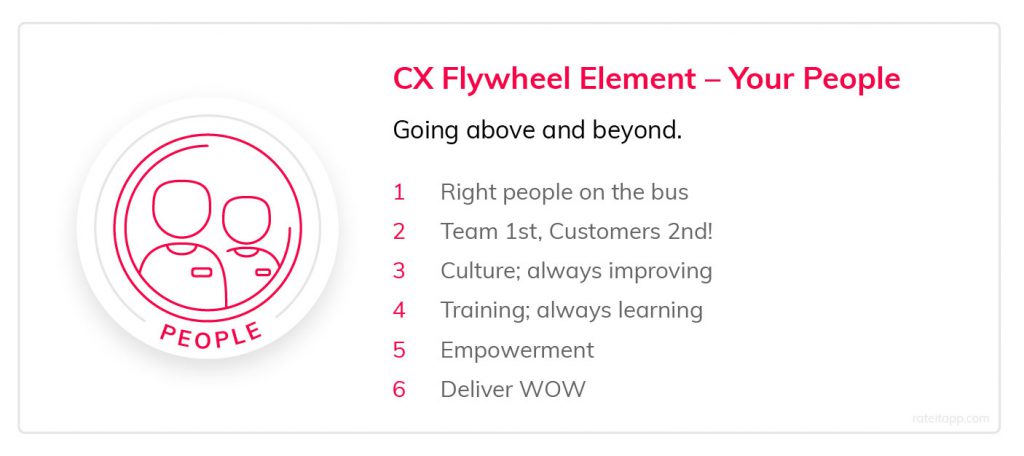
If you place your employees first and make sure that they’re happy, then good CX will follow. Here are the other elements that will ensure a flawless employee experience:
1. Get the right people on the bus
Fundamentally, all great CX starts with hiring the right people. Get the right people on the bus. Dennis Snow, a former Operating Area Manager at Walt Disney World said: “What’s the most important thing we can do to build a service culture in our organisation? You’ve got to hire service-oriented people”. And the best organisations are always on the lookout for great staff.
2. Employees first, customers second!
This one surprised us at first – many of our CX leaders spoke to the notion that it’s necessary to put staff ahead of customers. However, if you put your employees first and make sure they’re happy and engaged, they’ll ensure that your customers are happy. As Ray Gillenwater (former MD of BlackBerry ANZ) put it: “How do you get to happy customers? Happy employees is where you start.”
3. Foster a great internal culture
Make your customer-facing staff the heroes in your business. Reward them and make sure they are really well supported.
4. Invest in ongoing training
Ensure you have a regular training program so you can maximise the customer experience output of all of your great staff. Training needs to be ongoing (i.e. not just February = “Customer Service Month”) in order to build your team’s capabilities over time. And this should be something your staff enjoy and get tangible benefits from.
5. Trust and empower your team
Have a high level of trust in your team and empower them to make customer-based decisions on their own. Southwest Airlines have a great philosophy for this, which they’ve built into their culture: ‘If you’re acting in the best interest of the customer, then you’re always right.’
6. It’s showtime! Create memories with WOW moments.
The ultimate goal for your people is to create really amazing memories for customers. There’s an element of ‘performance’ to great CX. Disney World is a great example of this because they focus on never letting the ‘backstage’ interfere with the ‘on-stage’ performance that customers see. The customer should never see you out-of-costume, so to speak. There should always be an element of magic to every experience.
Process
The last component of our CX Flywheel is the mundane but necessary element called process. Solid systems and a structured approach to your CX program tie the other elements together.
Processes are also the glue that tie together and help to extract maximum value from the many tools available for measuring and operationalising the customer experience. For instance, customer-facing ‘voice of customer’ tools such as RateIt allow you to collect and analyse customer feedback in real-time. However, unless you’re using this information to incite action and improve your CX then it all just remains theoretical.
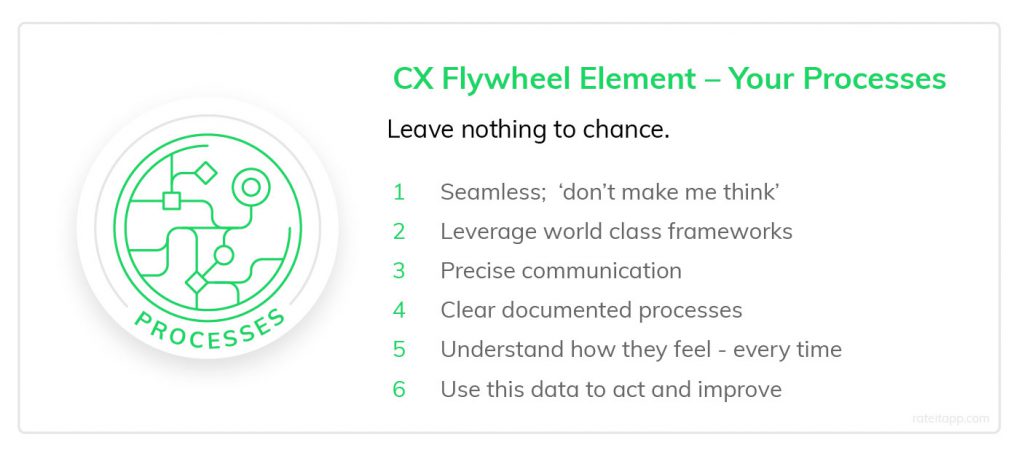
In our interviews, the following process-related best practices were mentioned time and again:
1. Make the experience seamless
The goal of any process we create is that it needs to be seamless. We should strive to remove friction from every interaction. Customer Experience Rockstar, James Dodkins, sums this up perfectly: “If you can deliver the same or a better outcome with less interaction with the customer … that is better for the customer.”
2. Leverage the right methodologies
Leverage a range of great methodologies to visualise your processes, such as design thinking, customer journey maps, service blueprints, customer success models, customer-centric sales, etc. We’ve done deep-dive episodes on each of these topics and will continue to explore more over time.
3. Invest in clear communications
Setting precise expectations often avoids issues with your processes. Often people have poor experiences simply because something is poorly explained, or not explained at all.
4. Visualise and document your processes
When you have these processes and procedures, document them and make them visual! Doing so helps to clarify internally what the processes are and assists in spotting issues so you can improve those processes over time.
5. Leverage technology to understand and measure CX
What gets measured, gets managed. If we’re going to be serious about customer experience, it needs to be measured throughout the customer journey. This helps you to have a really good understanding of the drivers behind the customer’s overall experience. Using real-time voice of the customer tools will help you get the best view of how your customers feel during every interaction.
6. Use data to instigate action and track improvements
Building processes and gathering data on the customer’s experience is great, but the real value comes once we take action to implement changes and improve. Steve Hopkins from Culture Amp spoke about their methodology for this, which consists of four steps: (1) gather great data, (2) find key insights, (3) take action on the insights, and (4) re-measure to ascertain if your action worked.
TLDR
In summary, the leadership, people and process elements form the four components of the CX Flywheel model, all centered around delivering true value to the customer during every interaction.
The insights we derived from interviewing the world’s 40 leading customer experience practitioners and leaders all contributed to the creation of this model. Now, the Customer Experience Flywheel can act as your blueprint and guide for improving the customer experience in your organisation.
We are always happy to share our knowledge around customer experience so feel free to reach out to us.

